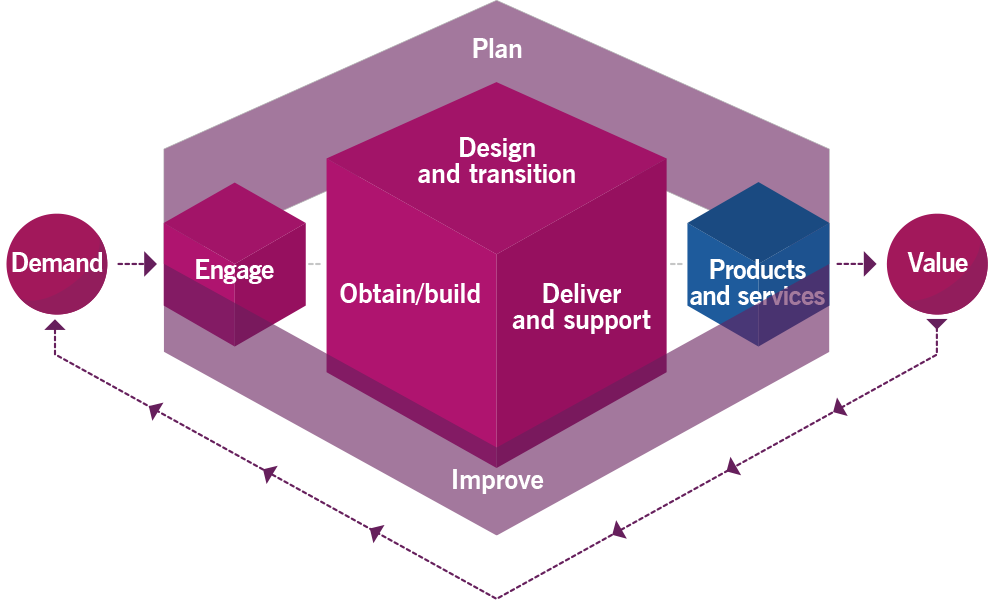The ITIL 4 Direct, Plan and Improve (DPI) module focuses on two aspects of the Value Chain: Plan and Improve.
The new features and changes introduced by ITIL DPI in the area of direction and control are certainly crucial.

Direction, Control and Influence
To define a direction, the heads of an organisation must detail who is in charge of control. ITIL is based on the idea of shared governance, overcoming the notion that governance is something to be delegated exclusively to the top echelons of an organisation.
Shared governance allows control to be distributed to many levels and it is based on the idea that everyone within an organisation has a perimeter of action over which they have authority.
ITIL also emphasises the idea that professionals exercise different spheres of influence even outside their own sphere of control by being able to influence the decisions and directions taken by others.
Therefore, the three main concepts are:
- Direction: a shared concept with multiple focuses;
- Control: linked to the perimeter of authority of the individual professional;
- Influence: indirect control over decisions and actions of other professionals.
How Much Control Should Be Delegated?
If the scope of control is too narrow, decisions are pushed upwards. This implies that even the most trivial decisions require approval from the top of the organisation, congesting and drastically slowing down all operations.
If the scope of control is too wide, strategic decisions are entrusted to lower organisational levels, thus giving too much responsibility to employees who lack the right knowledge, skills and business vision.
Basically, neither of these options is desirable for an organisation. Therefore, it is necessary to moderate risks by training professionals so that they can be autonomous within their area of expertise and by providing guidelines that can guide them in their choices. In this way, informed and structured decisions will be made at all levels of the organisation.
Risk Management
Risk management is closely linked to the concepts of governance and control.
The ITIL framework refers to the 8 principles of Risk Management recognised by the international standard ISO 31000:2018.
The objective of ITIL is to identify the modus operandi needed to put the risk management principles into practice:
- Iteration approach: divide a project into several sub-projects to make it easier to manage and to contain risk within a single iteration.
- Always ask questions: to assess whether the benefits outweigh the risks: “what would be the risk of doing nothing?”
If you want to have a complete overview of the ITIL 4 Direct, Plan and Improve module read our blog “ITIL Direct, Plan and Improve: Control and Metrics”.
The ITIL Direct, Plan and Improve module provides the practical skills needed to create a continuously improving IT organisation with a strong and effective strategic direction. ITIL DPI provides a practical method for planning and implementing continuous improvement using an agile mindset.
If you want to learn more, visit our website or contact us!









